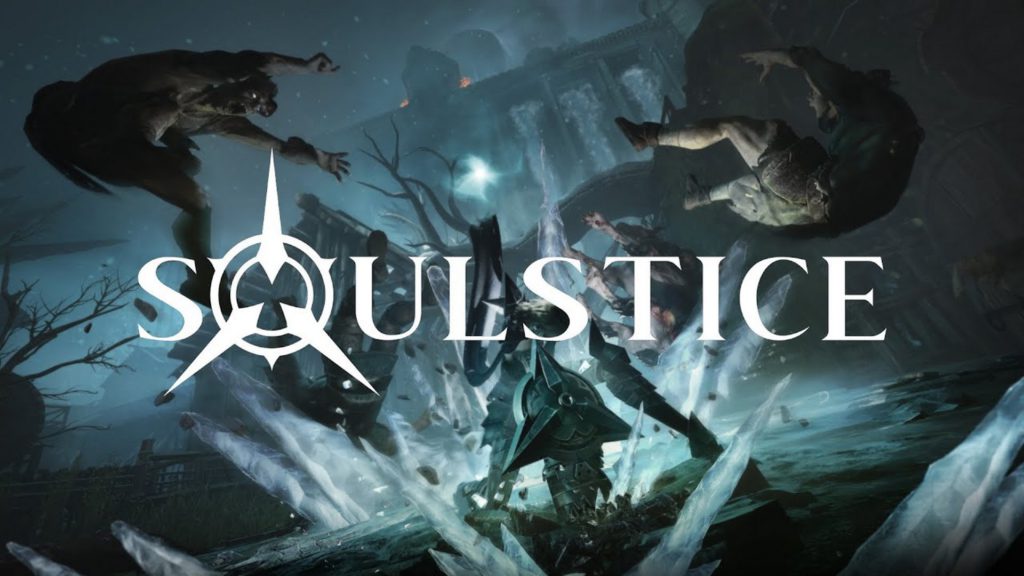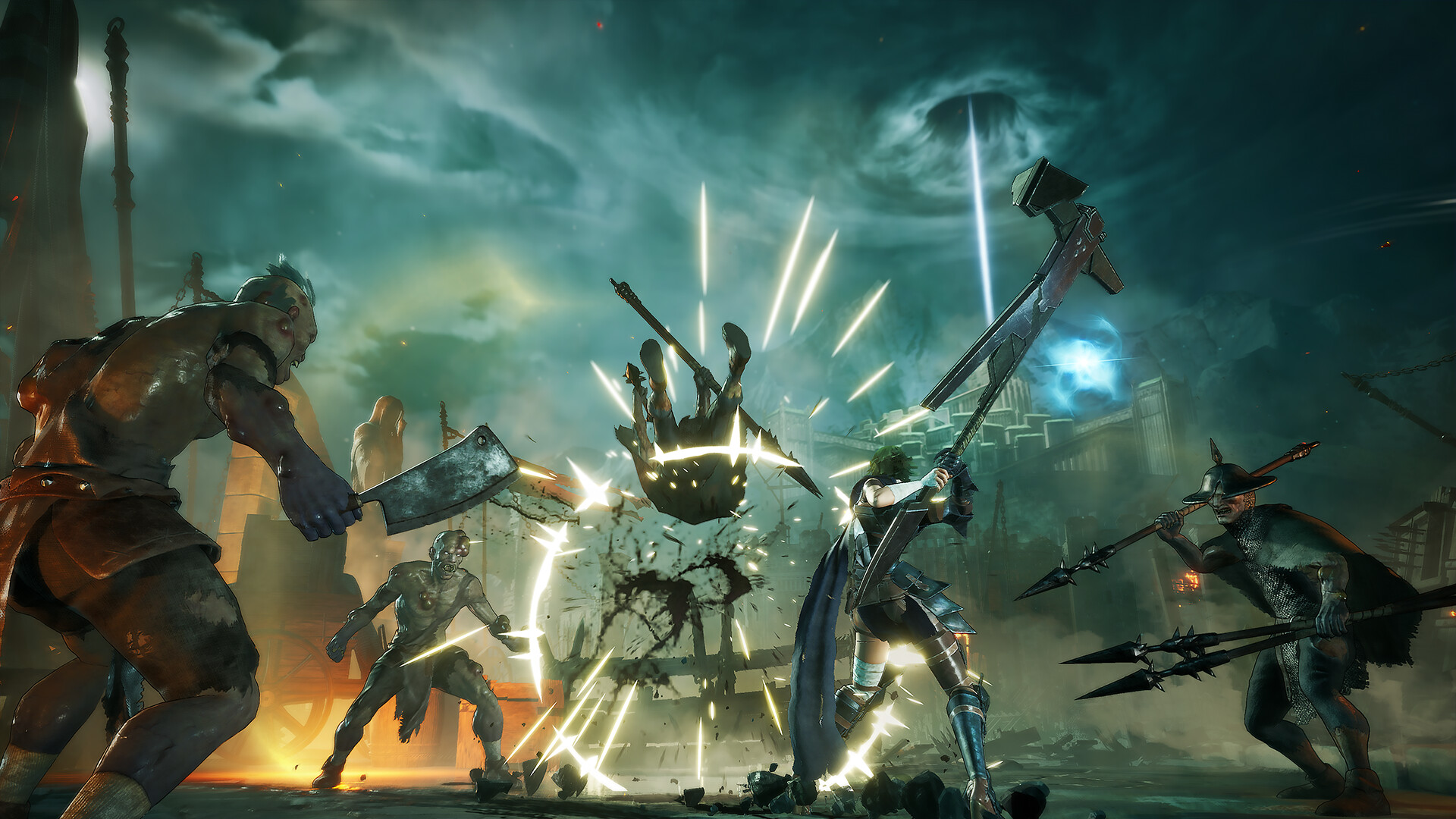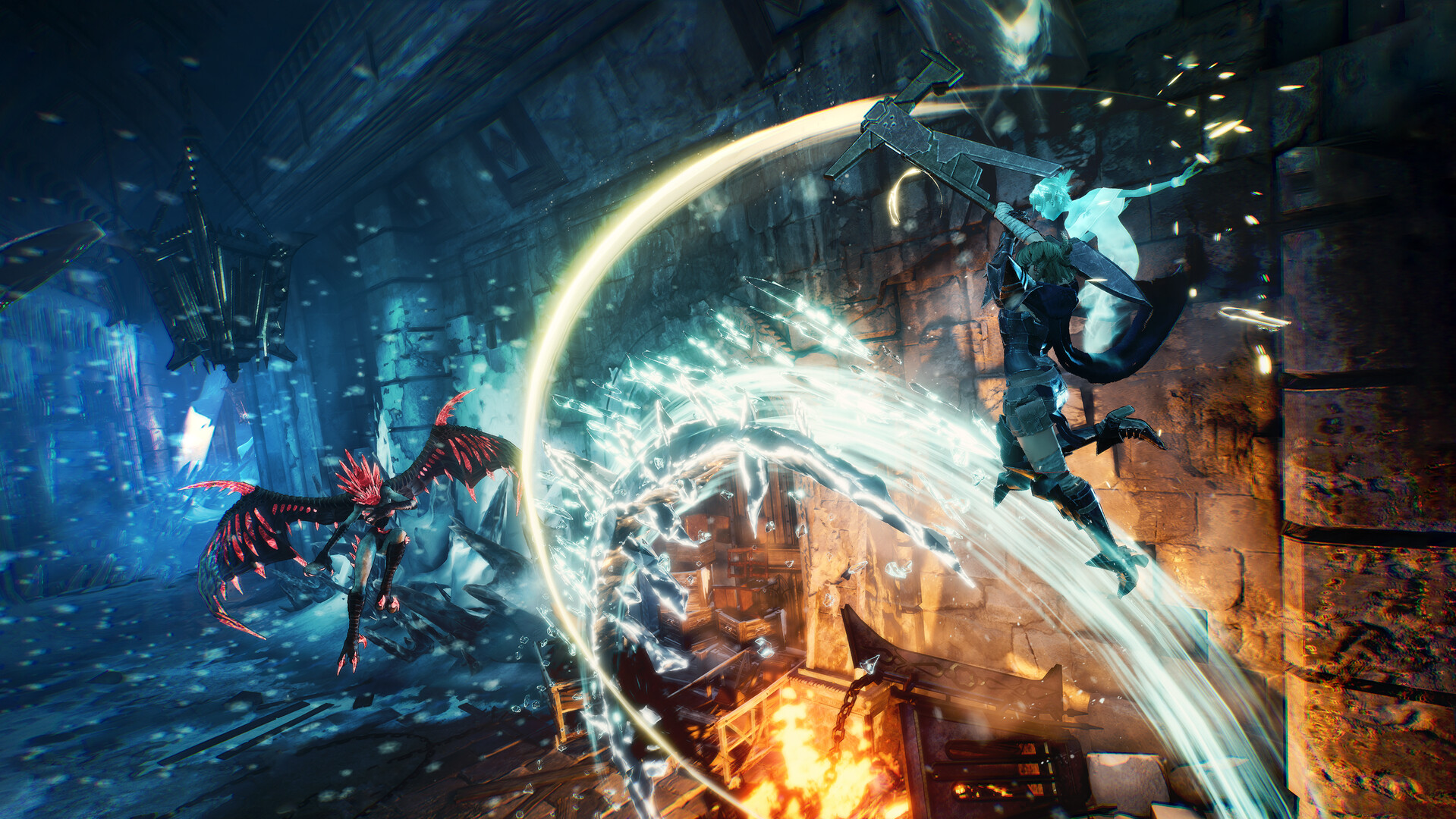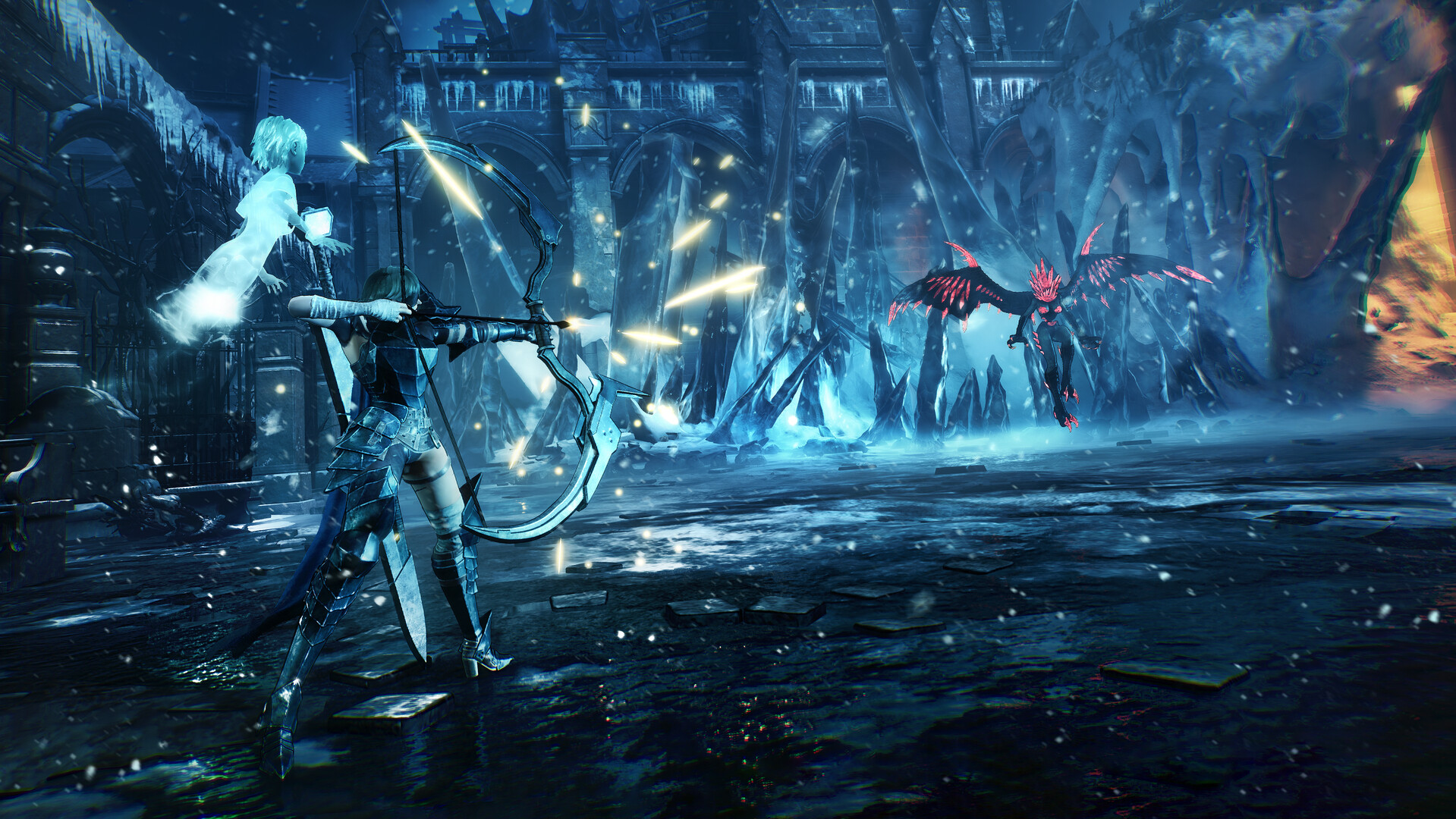
The dark fantasy genre is ripe for the picking when it comes to biblical-scale conundrums, diabolical demons, and more gloom and gore than you can shake a sword at. Soulstice, the brand-new skill-based hack and slash title from ‘Reply Game Studios’ is set to rekindle the immersive and devastating gameplay of games such as Devil May Cry, the Neir series, or Bayonetta. Set to release exclusively on next-generation Xbox consoles, PS5, and PC, this may be the beginning of games being designed with a higher performance ceiling than we are accustomed to.
In a world plagued by chaos, the godly figures known as the Keepers were able to prevail to banish the chaos itself beyond the veil to allow the birth of man. In the wake of the Order of the Ashen Blade being created to sustain the work of the Three Keepers, chosen soldiers are tasked with keeping the evil at bay by becoming the hybrid warriors known as Chimeras. A sacrifice is made to bind the two souls together which leaves one alive and the other a shade. Briar, accompanied by her soul shade companion and sister, Lute, find themselves on the brink of hell as they investigate the tear over the city of Ilden, with time running out, the sisters will be tested against the corrupted both on the battlefield and within. The premises was engorging early on and I must commend the methodical plot reveals that were carried out through environmental and other world-building.
This game positively oozes atmosphere from the moment you drink in the opening moments of the game. With an explosive battle through the tears of fabric and time as Briar launches through the hordes of enemies with a cosmic swirl of purple void and debris around you, it’s safe to say that subtly in combat won’t be needed. The rhythmic tones of holy harmonic chorus being belted out to a stylistic techno beat with classical instruments was a fitting backdrop to the chaos on screen. As for the character models themselves, they are brushed with cell shading to make them stand out against the background and were able to make the enemies and even the grizzled, battle-worn Briar herself, both vicious and cartoonish at the same time.

The cartoonish aesthetic doesn’t take away from the dark fantasy-inspired story as the corrupted humans still sport hollowed-out eyes and sickly skins that are sporting pustules and gnarly teeth. The wraiths bring a supernatural element to the fold with their ghostly remains glowing in a blue hue and the possessed abominations that occur when the wraiths inhabit the corrupted causing red crystals to burst out of the skin and twist their hosts into fast-moving nightmares with animalistic traits. The highlights will ultimately be found in the boss fights that dramatically ramp up the scale of enemies and offers unique encounters that stand out from one another, good luck to those who reach the “The Weavers” by the way, I still have nightmares after that fight.
The ruins of the once great Ilden will be your main stomping grounds as you climb the tiers of the city making your way to the catastrophic tear between realms over the Castle. Bathed in moonlight, rain-soaked slabs of stone will guide you along the outside structures to the inside of the wall that are coated with the crystal infestations caused by the corruption. You will frequently find yourself in a shadowy room with the only additional source of light coming from Lute’s energy auras. For the most part, the established tone maintains the sorrow-filled mystery as you disperse the corruption in the crumbling remains of the outlying villages and the overall broken kingdom.
The presentation of the game is further highlighted by the third-person camera aspect that has fixed perspectives as you explore. Often with a drawn-out view, you are but a part of the environment with stunning backdrops to add to the mysterious tones and lighting. There were often light environmental puzzles to tackle that wasn’t meant to be anything other than a chance to catch your breath, but it still gave me plenty of options to explore to scratch my curiosity since there was no in-game map to tell me where to go. Once you reach the combat, however, you are given full control of the camera with a dedicated lock-on feature as well if you so desire. This is where the calmer moments end and the chaos begins, as the combat hits hard, fast, and frequently.

The button masher may prevail in the early stages, but the skilled soldier will conquer in Soulstice. Adopting a point reward system that breaks down each chapter into a series of fights to master and earn medals based on time, damage taken, and combos landed, the further you hone your skills the more brutal you will become. A dodge with the ‘LB’ can be used in quick succession both in the air and on the ground and the ‘RB’ button is used to quickly access your consumables. Your trusted Ashen Vindicator sword will be with you always and with ‘Y’ will be able to pair with multiple heavy weapons attached to ‘X’ for combos that can lead to cinematic synergy attacks. These synergy attacks can only be obtained through Unity which is built by blocking, combo chains, and quick dispersal of enemies.
That is only half the battle as you will simultaneously be controlling Lute as the perfect counterpart to your malicious attacks. Lute can stun, freeze and hurl enemies into the air if you time the ‘B’ button when prompted. With the left trigger, you can create a blue aura that allows for Briar to attack and kill any wraith that you keep in the bubble and the possessed require the right trigger to cast a red aura so you can crack and dismantle the crystals growing from them. With four skill trees to branch into for Lute, you can craft her attacks to be purely offensive or offer a more defensive play style. The trade-off comes from using her powers too much and she will become temporally unavailable, meaning you can either spec into drawing from your kills or turn her abilities into an explosive payload at the cost of unity.
There is just so much to unpack as you learn what works best and how to add it into your repertoire. As you continue to unlock weapons from the ever-ominous observer Layton who works as a handy shop in the middle of levels, your ability dismantle armour with the Hand of Retribution gauntlet, swat flying foes with the Hallowed Hunter bow, or stem the crows with the tearing penance whip can be accessed at will by the D-pad. If all this still hasn’t filled your blood lust, the Rapture mode that is caused by the corruption inside Briar, that is threatening to burst out and cause her to transcend, explodes out after hitting max unity and every enemy becomes vulnerable when your demonic state is active, and you proceed to rip through the horde at a blinding pace.

I had to catch my breath after all of that, this combat system is quite the mouthful. I played through the full game on the second difficulty ‘Initiate’ which is for lack of a better term, normal. The highest difficulty of the five is only unlocked once you beat ‘Chimera’ difficulty and if you can manage that, you deserve a medal, several pats on the back, and a safe space to cry in. Early on, I was managing platinum and diamond but by chapter 9, I was averaging silver. The enemies are not too aggressive on ‘Initiate’ but the sheer number of enemies that needed their own requirements to kill I faced at the same time, the harder it was to build unity or keep a combo. I set it to ‘Chimera’ for laughs and was beaten to a pulp by a level of aggression only seen when Kratos gets going. Thrown in the challenge modes you can find along the way and there are mountains of opportunity for you to revisit to test your mantle with.
The last thing I wanted to touch on was the often-forgotten features of games, that being the codex, performance settings, and added-in assistance functions. With a landslide of enemies, weapon types, skill trees and even stories to remember, being able to brush up on any of it from the codex was actually a godsend to me when I felt like I wasn’t hitting my full potential. If the fast-paced and often complex battle system was too much, there were features to toggle on auto fight, auto block, or for Lute to activate the correct debuff when needed albeit these came with a note on your save to signify these were active. Lastly, the graphics mode offers a performance, balanced, or resolution mode that is all handled flawlessly, while also offering colour blind features to aid in the dark and ominous experience.
Soulstice sees the sisters of Briar and Lute, tear down the mutated chaos with finesse and brutal style. The climb up the desolated city of Ilden offered a curiosity-filled mystery entwined with deception, emotional toil of Briar and Lute’s story and their synergy in combat made the journey that much more enticing. I was beaten and bruised but always came out smiling at the end of each chapter and as I eagerly booted up the next chapter. If you are even halfway interested in Dark fantasy, skill-based combat, and interested in unravelling a mystery, then Soulstice is a good place to be.

The Good
- Briar and Lute combat styles play off each other in fluid and satisfying ways
- Dark, gritty and slightly cartoonish art style was the perfect blend to immerse me
- World building was on point and the slow plot reveals were well paced
- Enemies’ system makes combat smart and engaging as it became a puzzle to solve in real time
- Mystery and ominous tones ramp up to intense and chaotic battle harmonies
- Varied weapons were brutal and devastating in their own right
- Skill tree for Lute gave interesting alternative strategies to chase
- Assistant features open the game to those who want a lighter challenger or indeed need a little help
- Game play was a rock-solid performance that was able to keep up with the on-screen chaos
The Bad
- An option for an in-game map wouldn’t have been a bad idea








